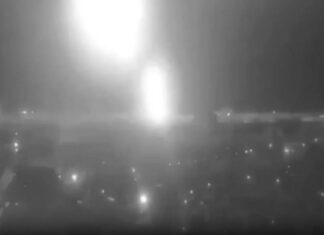BAE Systems has successfully demonstrated a passive geo-location capability that enables aircraft to quickly pinpoint the location of enemy emitters positions (radars, communications equipment etc) in crowded radio frequency (RF) environments. The new system can be deployed on any type of military aircraft. The company demonstrated, for the first time, the ability to nearly instantaneously construct a geo-location solution, based on data received on a single platform. Other signals intelligence (SIGINT) sensors conduct a more complex process, “fixing” a hostile emitter by measuring angles of arrival of the emitter’s pulses at several stations receiving the same pulse simultaneously, at different locations.
The new capability, demonstrated at the U.S. Naval Air Warfare Center Weapons Division, China Lake, Calif., enables aircraft to calculate geo-location with any radio frequency (RF) signal. “The battlespace is a complex environment that is increasingly saturated with RF energy. These conditions make it hard for multiple aircraft to simultaneously detect the same signal,” said Dr. Hugh Kao, BAE Systems technical director at Yonkers, N.Y. “The technology we have demonstrated enables accurate real-time geo-location of threat signals from bits and pieces of data.” The capability has already been tested in a series of flights.
The Department of Defense’s Joint Strike Fighter program office supported the flight testing, which was accomplished with a single T-39 aircraft and a ground station performing as a “virtual” aircraft. The demonstration follows BAE Systems’ successful demonstration, in November 2004, of how a single aircraft can passively detect and locate threat radars. The flights were conducted at Eglin Air Force Base, Fla., using an F-15 fighter.



















